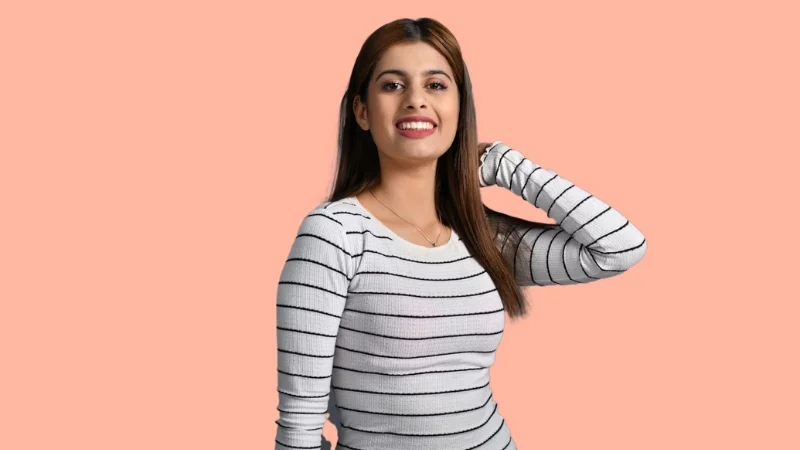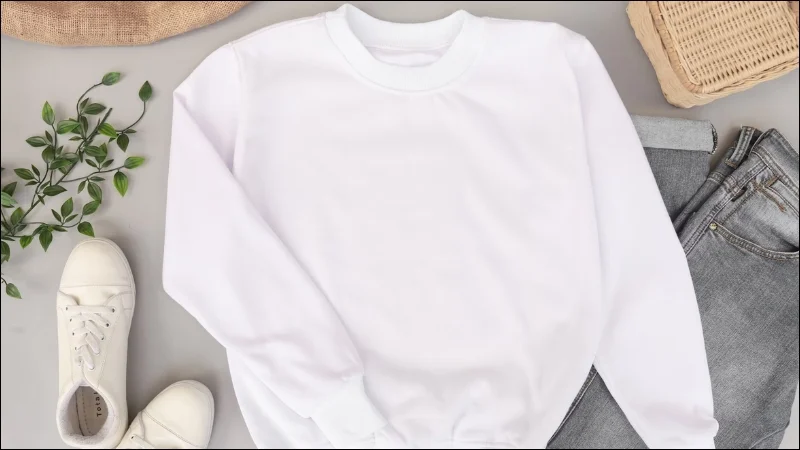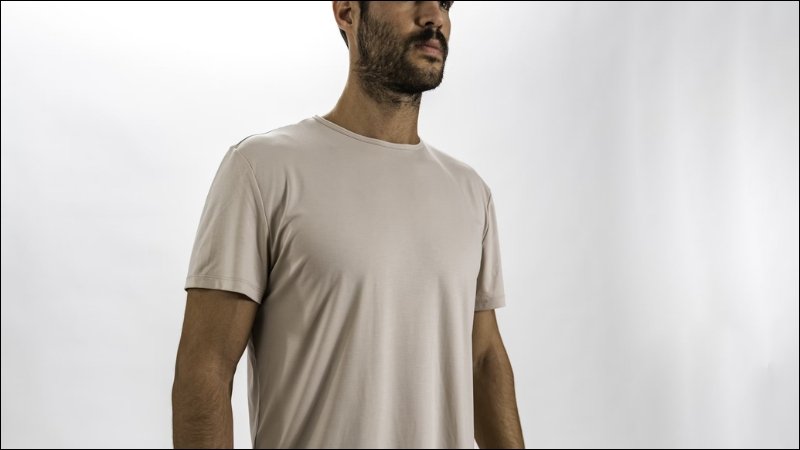Clothing Fit: Size, Shape And Reducing Returns for Brands
Most people understand “fit” simply as whether clothing is the right size. However, within the apparel industry, “fit” carries a much deeper, more critical meaning. For small and medium clothing businesses, grasping this distinction is fundamental. Common pain points include inconsistent sizing across batches and high return rates when garments don’t meet expectations. Businesses also struggle to clearly explain garment fit, which encompasses its intended shape and proportion.
These issues directly impact your bottom line and brand perception. This article offers practical insights into standardizing fit using effective measuring techniques and clear specifications. You’ll also learn strategies for communicating fit clearly through tools like labels, tags, and size charts. Ultimately, this helps customers make informed choices and reduces costly returns. Let’s start!
1. Defining “Fit”: More Than Just Garment Measurements
1.1 The Core Concept: Conformance, Suitability, and Style Intent
At its core, fit describes the relationship between a garment’s specific dimensions and cut, and how well these conform to the wearer’s unique body shape and proportions. But achieving a successful fit involves more than just matching numbers. Suitability is equally crucial: does the way the clothing sits and moves align with the intended style (consider the difference between sharply tailored formalwear and relaxed loungewear), its function (like the need for unrestricted movement in activewear), and the wearer’s personal expectations for comfort and appearance?
For instance, a dress might technically conform to a wearer’s measurements but feel unsuitable if the style is too tight for their comfort preference or the intended occasion. Therefore, understanding fit requires appreciating both the objective measurement aspects and the subjective perception of how the garment looks and feels on the wearer.

1.2 Key Elements Influencing How Apparel Fits
Several distinct elements combine to determine the final fit of a garment:
- Body Measurements: Standard body measurements (like chest, waist, hip circumference, or inseam length) serve as the foundational reference point. However, recognizing the vast diversity in human body types beyond these basic numbers is essential for developing truly representative sizing.
- Garment Specifications & Pattern Design: The flat pattern design is the blueprint that translates into the garment’s three-dimensional shape. Garment specifications detail the finished dimensions of the clothing piece itself (e.g., the chest width of a shirt), not the body measurements the garment is intended to fit. These specs are critical for production consistency.
- The “Cut”: Beyond overall dimensions, the specific way certain areas are shaped – the “cut” – dramatically influences comfort and appearance. Details like the depth and curve of an armhole, the angle of a shoulder slope, the shape of a neckline, or the curve of a pant’s crotch significantly impact movement and how the garment hangs, even if primary circumference measurements seem adequate.
- Fabric Properties: The material itself plays a significant role. Fabrics with stretch allow for a closer fit and more tolerance, while non-stretch woven fabrics require more carefully calculated ‘ease’ (defined below) for comfort and movement. Furthermore, a fabric’s drape (how it hangs, whether softly or stiffly) and weight influence the garment’s overall silhouette and perceived shape.
- Design Intent & Ease: ‘Ease’ refers to the amount of space built into a garment beyond the wearer’s actual body measurement. This isn’t arbitrary; it defines the intended Style Intent and overall Fit Type. Minimal ease results in a Slim Fit, moderate ease creates a Regular Fit, generous ease leads to a Loose Fit, and substantial ease defines an Oversized Fit. The amount of ease is a deliberate design choice linked to the desired aesthetic and function.
2. Why Consistent Fit is Non-Negotiable for Your Clothing Business
2.1 The Customer Experience Impact: Satisfaction vs. Frustration
In the world of online apparel shopping, fit often stands as the primary factor influencing purchase decisions and, conversely, the leading cause for returns. Experience shows that inconsistent or poor fit is a direct line to customer dissatisfaction. Shoppers encountering ill-fitting garments are likely to voice complaints, leave negative reviews that damage brand perception, and abandon future purchases.
Conversely, achieving reliable sizing cultivates brand loyalty. When customers trust that they can reorder an item in their size and receive the same predictable fit, they are far more likely to become repeat buyers, significantly increasing their lifetime value to the brand. Consistent customer satisfaction hinges heavily on mastering fit.
2.2 Operational Efficiency: Saving Time and Money
The financial repercussions of inconsistent fit extend beyond customer dissatisfaction. High return rates incur substantial costs: return shipping fees, labor for inspecting and restocking returned items, potential product damage rendering items unsellable, and increased customer service workload handling inquiries and complaints. Establishing clear fit standards mitigates these issues. Well-defined specifications provide unambiguous pass/fail criteria for quality control during manufacturing, reducing errors.
Furthermore, consistent sizing streamlines the entire product development process, often leading to fewer sample revisions and faster time-to-market. Predictable sizing also simplifies inventory management and forecasting, contributing to overall operational efficiency.
2.3 Brand Identity and Perception: What Your Fit Says
The way your clothing fits is a powerful, albeit often subconscious, element of your brand identity. The chosen fit profile – whether consistently sharp and tailored, comfortably relaxed and flowing, or daringly body-conscious – becomes an integral part of the brand’s aesthetic signature.
Different fit types communicate messages about the intended wearer and their lifestyle; for example, a precise, structured fit might appeal to a professional audience, while a looser, softer garment fit could target a market prioritizing comfort and casual style. Ultimately, the fit of your garments acts as a non-verbal cue, reinforcing your brand perception and helping to attract and retain your desired customer base.
3. How to Define and Standardize Fit Across Your Product Line
3.1 Establishing Your Base Size and Fit Model Profile
The first step towards consistent fit is defining your foundation: the ‘base size’. This is typically a middle size (like Medium or a specific numeric size) that represents the core of your sizing structure. Critically, you must also define the ideal body shape and proportions that this base size is intended to fit, reflecting your specific target customer, not just a generic average. Businesses face a choice: rely on industry standard measurement charts or invest in a professional fit model whose physique perfectly matches your target profile.
While standard charts offer a starting point, a consistent fit model provides a tangible, reliable reference for fittings and ensures the intended body shape and proportions are accurately catered for. Whichever path you choose, unwavering consistency in this base profile is paramount.
3.2 Developing Clear Garment Specifications (Tech Packs)
A technical package, commonly known as a ‘tech pack’, is the essential blueprint for manufacturing any garment. Within the context of fit, the tech pack translates the design intent into precise instructions. It contains detailed garment specifications, including critical Points of Measure (POM) – specific locations on the garment where measurements must be taken (e.g., chest width 1″ below the armhole, waist circumference at the narrowest point, sleeve length from shoulder seam to cuff, front rise on pants).
Equally important is defining acceptable measurement tolerances (the allowable +/- variation from the specified measurement), which are crucial for effective quality control. These detailed specs ensure that the factory can consistently produce garments that achieve the intended technical fit.
3.3 Understanding and Applying Grading Rules Consistently
Once the base size pattern is perfected, ‘grading’ is the process used to create the patterns for the full size range (e.g., scaling up for L, XL and down for S, XS). It’s crucial to understand that grading is not simply adding or subtracting the same amount from every dimension. Human bodies do not scale uniformly; proportions change across sizes.
Effective grading rules account for this proportional growth or reduction. Common errors include making armholes disproportionately tight in smaller sizes or too large in bigger sizes, or altering the rise of pants incorrectly, thus distorting the intended fit character. The goal of consistent grading is to maintain the feel and intended proportions of the fit across the entire size offering.
3.4 The Crucial Fitting Process: Testing, Feedback, and Refinement
Specifications and patterns are theoretical until tested on a real body. Fit sessions are indispensable for verifying and refining the fit. During these sessions, the sample garment is assessed on a live fit model (ideally the one matching your base size profile). Key evaluation points include how the fabric drapes and hangs (balance), overall comfort, whether movement is restricted, how well the actual garment measurements align with the specified Points of Measure (POM), and the general aesthetic appeal.
The process requires gathering both objective feedback (measurement checks against the tech pack) and subjective feedback (the wearer’s comfort, perception of look and feel). Fit perfection is often an iterative process; feedback from fittings leads to necessary pattern adjustments and spec refinements until the desired fit is consistently achieved. This is where you adjust the pattern to truly nail the intended silhouette and comfort level.

4. Communicating Fit Effectively: Helping Customers Choose Right
4.1 Designing Helpful and Accurate Size Charts
Effective Size Charts are crucial for bridging the gap between your product and the online customer. Move beyond generic S/M/L designations. A truly helpful chart includes both the key Body Measurements the customer should take for themselves and the corresponding critical Garment Measurements for that specific Clothing Size. This dual approach allows customers to measure themselves accurately and also compare the garment’s dimensions to clothing they already own, giving them a better sense of the intended ease and fit.
Incorporate clear Visuals or diagrams demonstrating precisely where on the body and the garment these measurements should be taken. Use straightforward language, clearly specify the units of measurement, and consider providing guidance on potential International Sizing differences if applicable to your customer base.
4.2 Leveraging Labels, Hang Tags, and Packaging
Your product’s physical components offer valuable real estate for conveying fit. Labels (both woven and printed inside the garment) and Hang tags should communicate more than just the basic Size. A highly effective practice is to clearly state the specific Fit Type using consistent terminology across your range – for example, “Slim Fit,” “Relaxed Fit,” “Classic Fit,” or other relevant Descriptive terms.
This immediately sets expectations. Furthermore, investing in durable, clearly printed Labels ensures this vital Fit information remains legible throughout the garment’s life, long after Hang tags are removed. This aids customers in recalling the specific fit they purchased, simplifying repeat buys and reducing sizing confusion down the line.
4.3 Enhancing Product Descriptions and Photography Online
Detailed Product Descriptions and thoughtful photography are essential for communicating Fit in an online environment. Go beyond listing features; use descriptive language to explain how the garment is designed to fit the body. Examples include phrases like “Cut close through the chest and shoulders,” “Features a high-rise waist and a relaxed leg,” “Designed to drape loosely,” or “Slightly cropped length hitting at the natural waist.” Accompany this text with high-quality images showing the garment from multiple angles on a model.
Critically, always state the model’s height and the Size they are wearing in the photos. Acknowledging the inherent challenge of assessing fit digitally, providing this level of detail in descriptions and photography significantly helps customers visualize how the garment will look and feel on them.

5. Related Questions
5.1 How do I choose the right fit model or base measurements?
Choosing your fit model or defining base measurements starts with deeply understanding your target customer’s typical body shape and proportions. You can use industry standard measurement charts as a starting point, which offers accessibility.
However, hiring a live fit model whose physique closely matches your ideal customer profile provides a more accurate and consistent reference for fittings, ensuring the garment drapes and moves as intended on your target body type. The key is consistency once the standard is set.
5.2 What’s the practical difference between including garment vs. body measurements on a size chart?
Including both body measurements and garment measurements on a size chart serves distinct purposes. Body measurements guide customers in measuring themselves accurately to find the size designed for their dimensions.
Garment measurements, on the other hand, show the actual finished dimensions of the clothing item itself. This helps customers compare the item to clothing they already own and understand the amount of intended ease (roominess) built into the design, giving a clearer picture of the final fit.
5.3 How much ‘ease’ is typically appropriate?
The appropriate amount of ease varies significantly depending on the garment’s intended style, function, and fabric type. There’s no single correct answer. For example, a close-fitting stretch knit top might have very little or even negative ease (stretching to fit), while a structured woven jacket designed for layering will require considerable ease across the shoulders and chest for comfort and movement. Generally, slim fits have minimal ease, regular fits have moderate ease, and loose or oversized fits incorporate generous ease.
While high-quality, informative labels and tags are crucial components of communicating fit, they cannot solve the challenge entirely on their own. They effectively convey key information like size and fit type (e.g., “Slim Fit”) directly on the product.
However, comprehensive fit communication requires a multi-faceted approach, including detailed size charts with both body and garment measurements, descriptive text in product listings, and clear photography. Labels and tags reinforce the message but work best as part of this larger system.
5.5 Common fit problems?
Some frequently encountered fit problems include discomfort or improper drape due to incorrect pant rise (too high or too low), gaping at the bust or waistband, tightness across the shoulders or through the sleeves restricting movement, sleeves or pant legs being significantly too long or too short for the intended wearer, and overall disproportionate shaping that doesn’t align with standard body contours. Addressing these common issues through careful pattern making, grading, and fitting is key to customer satisfaction.
Read more:
Ultimately, understanding fit in apparel goes far beyond simple sizing. It involves a complex interplay of precise measurement, thoughtful cut and shape, appropriate fabric selection, and clear style intent. Mastering this complexity isn’t just about creating better clothes; it’s a fundamental business imperative. Achieving consistency in fit across your product line directly translates to enhanced customer satisfaction, significantly reduced operational costs associated with returns, and the invaluable establishment of enduring brand trust.
Defining, standardizing, and effectively communicating your fit standards should be viewed not as an expense, but as a strategic investment in your brand’s reputation and long-term success. Begin applying these concepts to your design, development, and communication processes. Taking control of fit is taking control of a crucial aspect of your customer experience and brand identity. For expert support in creating high-quality labels and tags that effectively communicate your brand’s unique fit, explore the solutions available to support your brand’s journey.






















